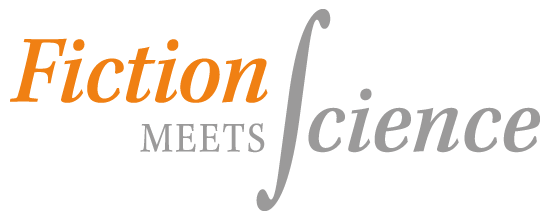4d. The role of gender in contemporary fictional depictions of science
Society has long perceived the
practice of science as an inherently "masculine" undertaking. Not
only were women excluded from practicing science, just as they were excluded
from many other professions, but scientific thought itself was perceived as
"male thinking" in ways that other intellectual and creative
endeavors were not (Keller 1996: 76). These "beliefs" are deeply
entrenched in cultural stereotypes, education systems, and in the institutions
and practice of science (cf. ibid; Russett 1989; Hewlett 2008). In her seminal
1985 treatise on gender and science, Evelyn Fox Keller attempts to track the
"genderization" of science, claiming that "the fact that the
scientific population is even now overwhelmingly male is itself a consequence rather
than a cause of the attribution of masculinity to scientific thought"
(1996: 76). The persistent lack of women in the scientific workforce is the
focus of attention and concern in the 21st century, both in terms of equal
opportunity and wasted human resources. But women have become a more
significant presence in many fields of science and in particular in the life
sciences (cf. European Commission 2009; Hill 2010). How is the entrenched
perception of science as gendered reflected, challenged, or illuminated in
contemporary fictional treatments of science? How does gender impact the
representation of institutional and social conditions for science?
Analyses
of popular entertainment
media and literature indicate that throughout most of the 20th century, science
was depicted as an overwhelmingly male-dominated enterprise (cf. Haynes 1994,
2003; Flicker 2003; Weingart 2003; Steinke 2005; Colatrella 2011), where women
are subject to “strategic marginalization” (Flicker 2003: 316) and "have
either no place at all or ‘their’ place, i.e., a woman’s place” (Weingart 2003:
283). These studies have looked at representations of scientists in literature
and film identifying stereotypes such as the (male) mad/bad, noble, inhuman,
and dangerous scientists or the (female) old maid, male woman, daughter or
assistant, lonely heroin, and babe scientist. Carol Colatrella has examined
selected novels and films ranging from the 19th to the 21st centuries, looking
for constellations of characterization and narrative that might encourage or discourage
women from entering scientific professions. But the representation of gender
per se in recent literature or film where science is center stage has yet to be
explored. What exactly is a "woman's place"—and a man's—when it comes
to the production and implementation of scientific knowledge?
Employing
techniques for reading film as “text,” with its own semiotic system and “film
language” (Metz, [1974] 2007), we conduct textual
analyses of recent science novels and of contemporaneous films with
"realist" portrayals of science (examples of the latter include Outbreak.
(USA: 1995); A Beautiful Mind (USA: 2001); Contagion
(USA: 2011); and Die Vermessung der welt (D/AT: 2012)). Can
we identify the stereotypes mentioned in earlier studies? How might
they have changed, or have new ones emerged? What gendered character traits are
associated with success and failure, who is marginalized, and who works in the
mainstream? Do we find gendered modes of thought when it comes to science—do
the male and female scientists have different ways of solving problems, or
thinking about scientific concepts, or considering ethical implications? Where
exactly in the scientific sphere do we find male and female scientists? In the
public university lab, the private company, or hidden away in a cellar at home,
as Weingart noted in many of the old films he analyzed (2003: 285)? Do they
work on the top floor or in the basement? Place or, more precisely, physical
space in the sense that it is manipulated in social power relations, can be
particularly revealing when it comes to understanding representations of gender
and the more subtle aspects of hierarchical relations (Löw 2001; Liebrand 2003;
Massey 2007; Henke 2010, 2013). Here we examine the symbolic function of the
places in which the male and female characters move, or their spatial
juxtaposition, the borders around and between them—interior or exterior,
private or public, home or workplace, office or laboratory, high or low, close
or distant. How are territories defined in the scientific workplace? Are female
scientists included in or excluded from certain spaces such as labs or offices,
and how does this affect their access to knowledge and power?
Both novel
and film can be
understood as complex sign systems with specific modalities and mechanisms of
meaning. Whereas the novel creates meanings in a single textual dimension, film
employs several audio-visual dimensions. Do we see any categorical differences
between the representations of gender in science films and novels? What particular
insights do we gain from the construction of gendered spaces, and do these
differ in the two media? Is the practice of science still perceived as
gendered, and how does the presence or absence of women in the representation
of the scientific sphere influence those perceptions?
